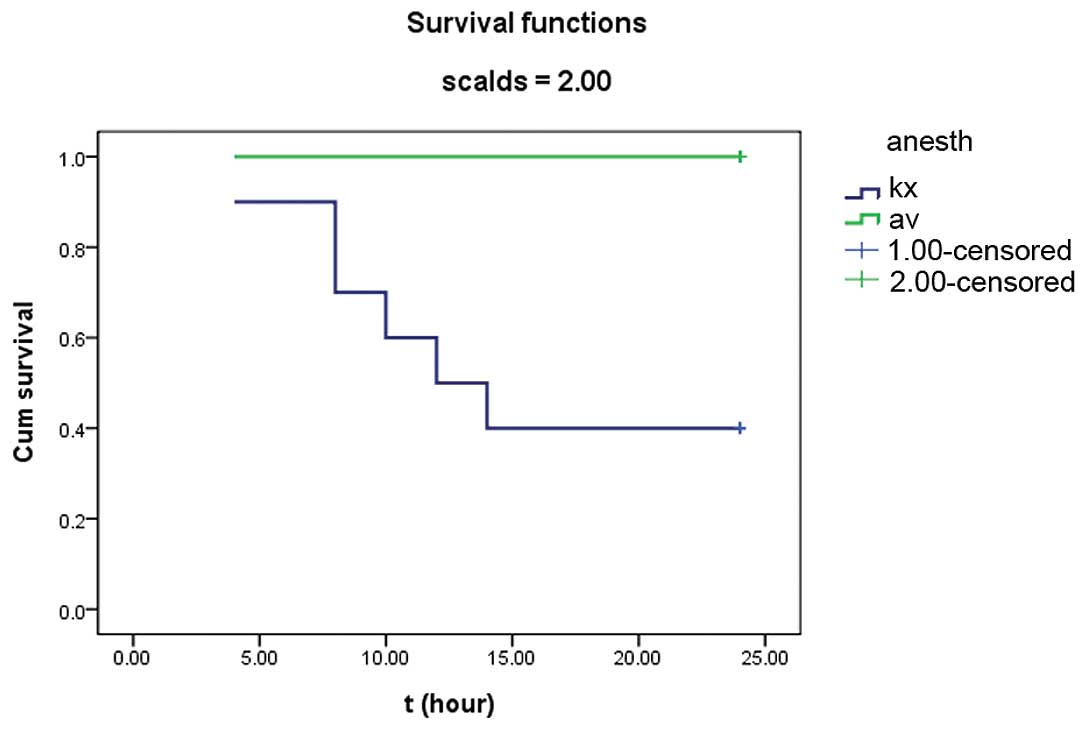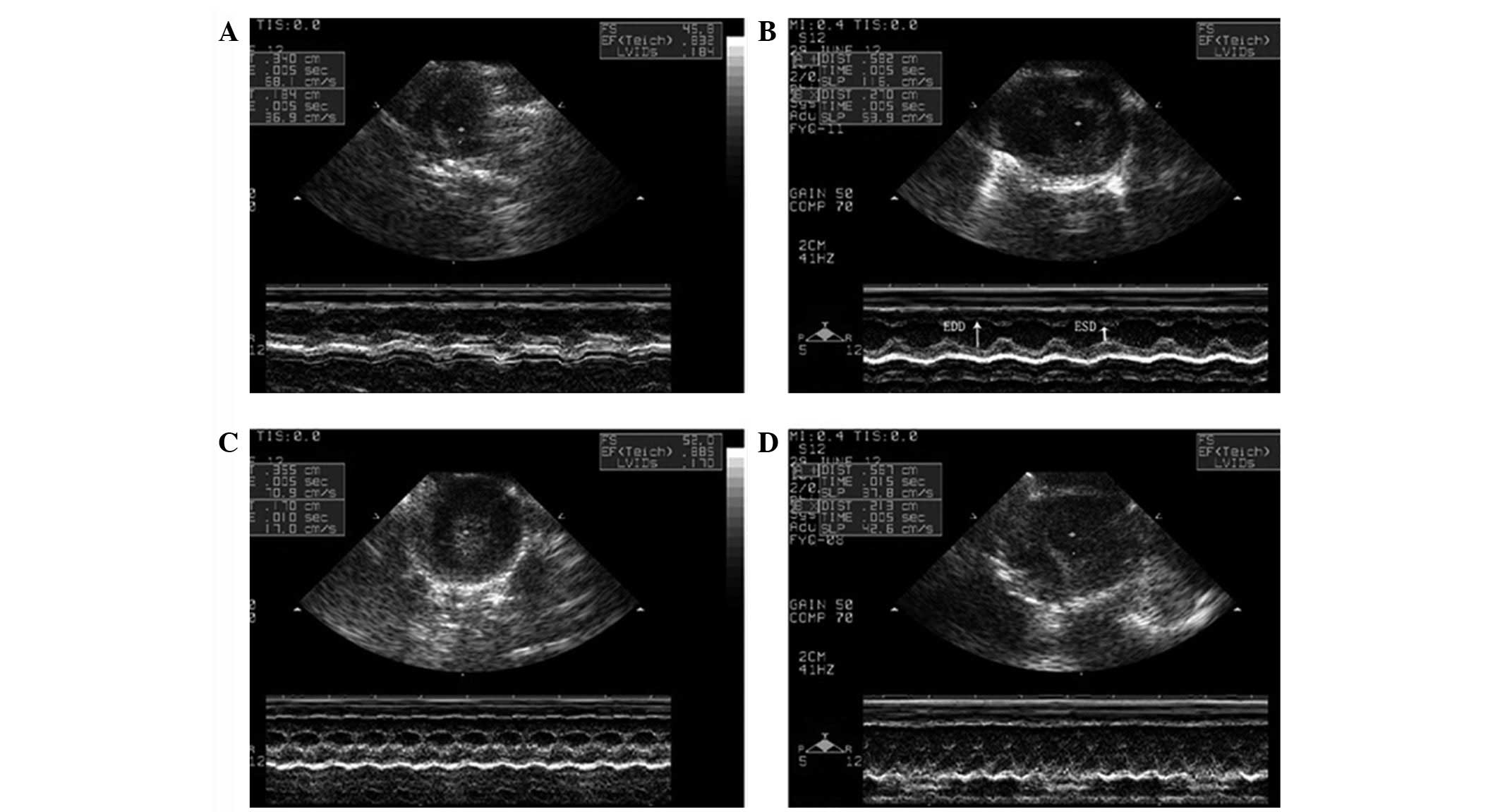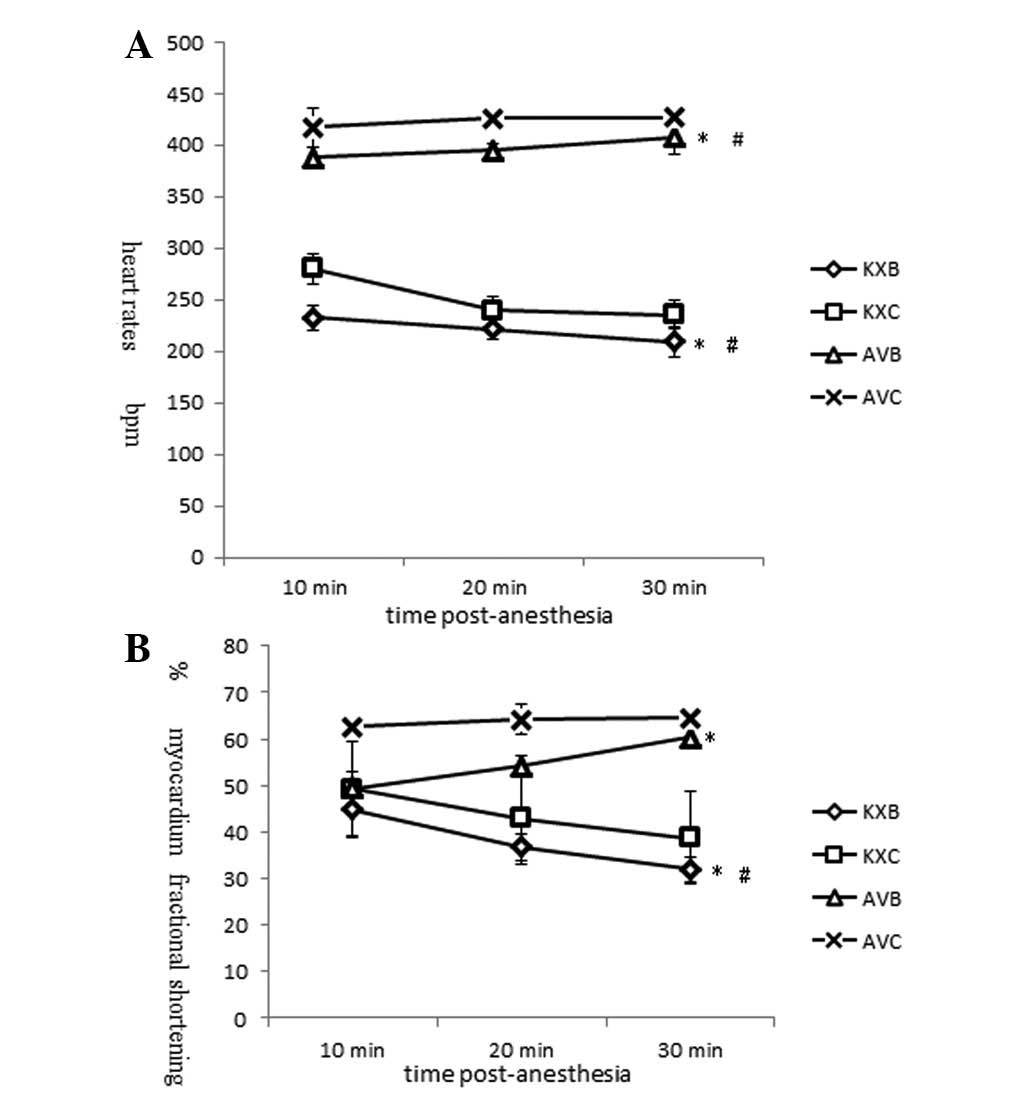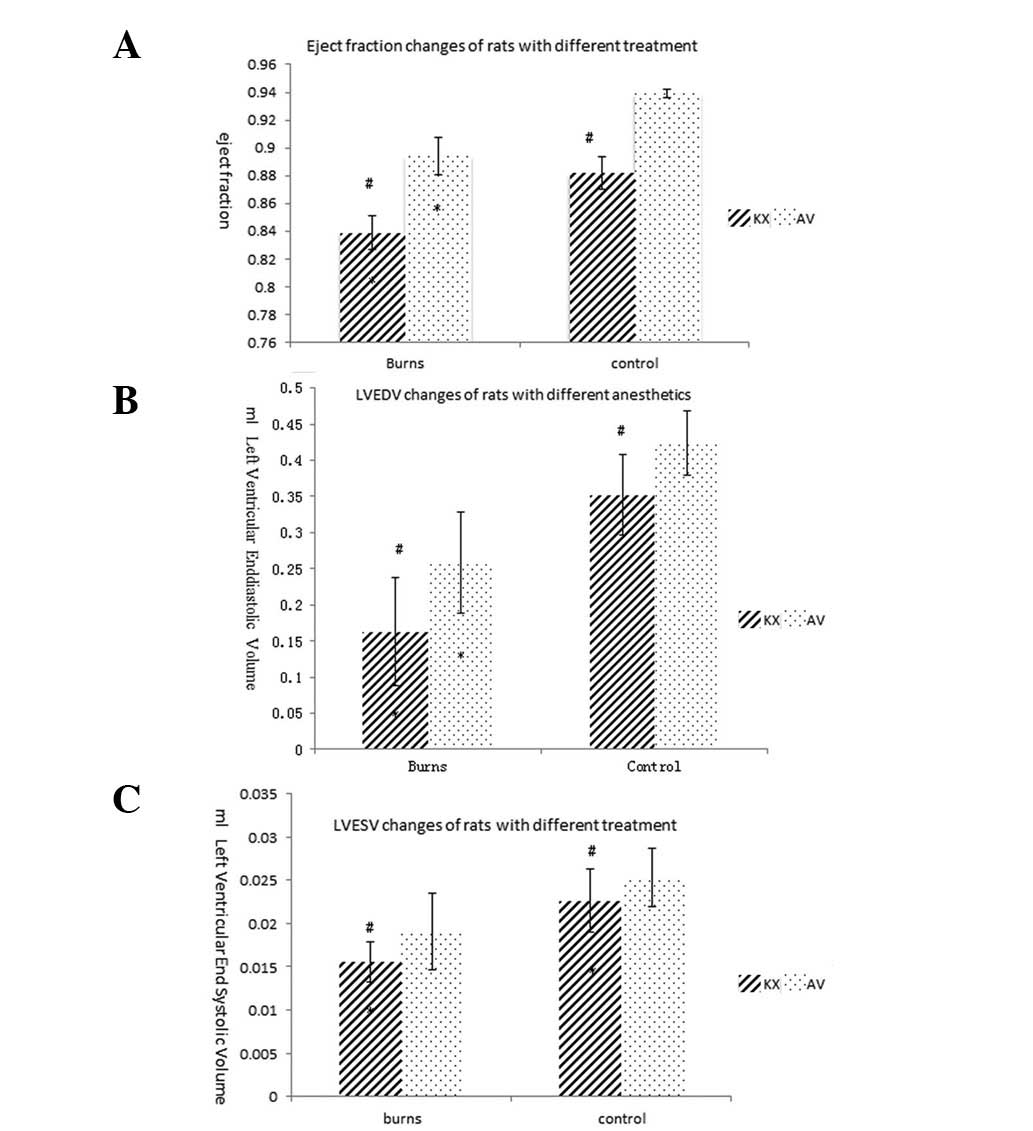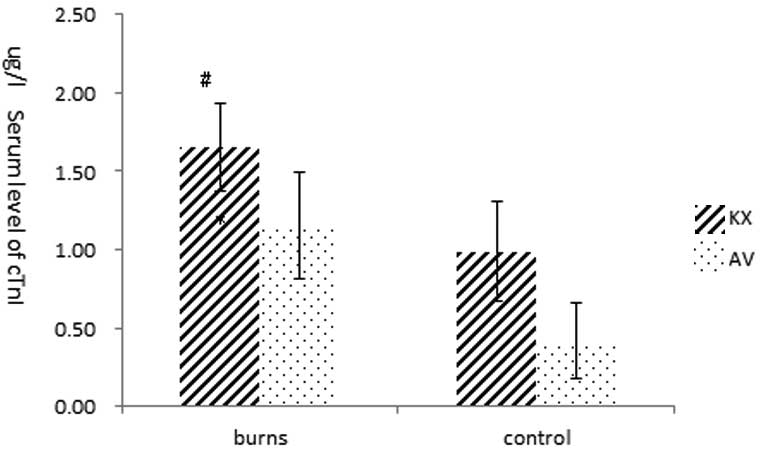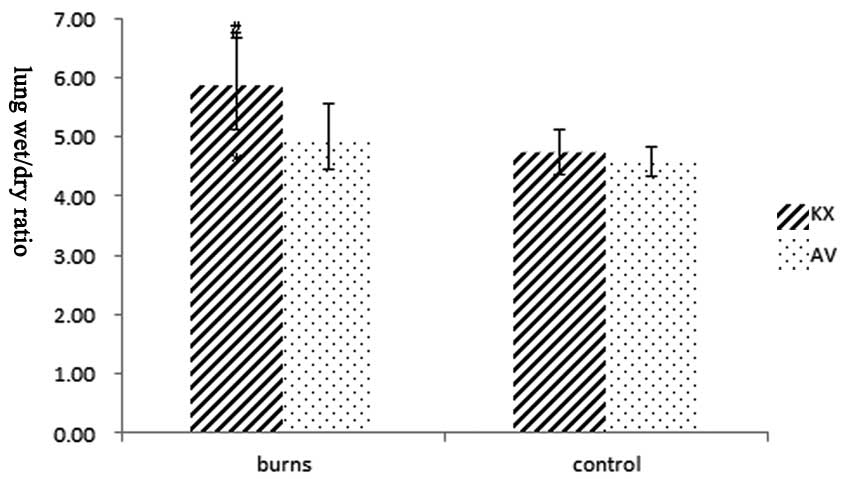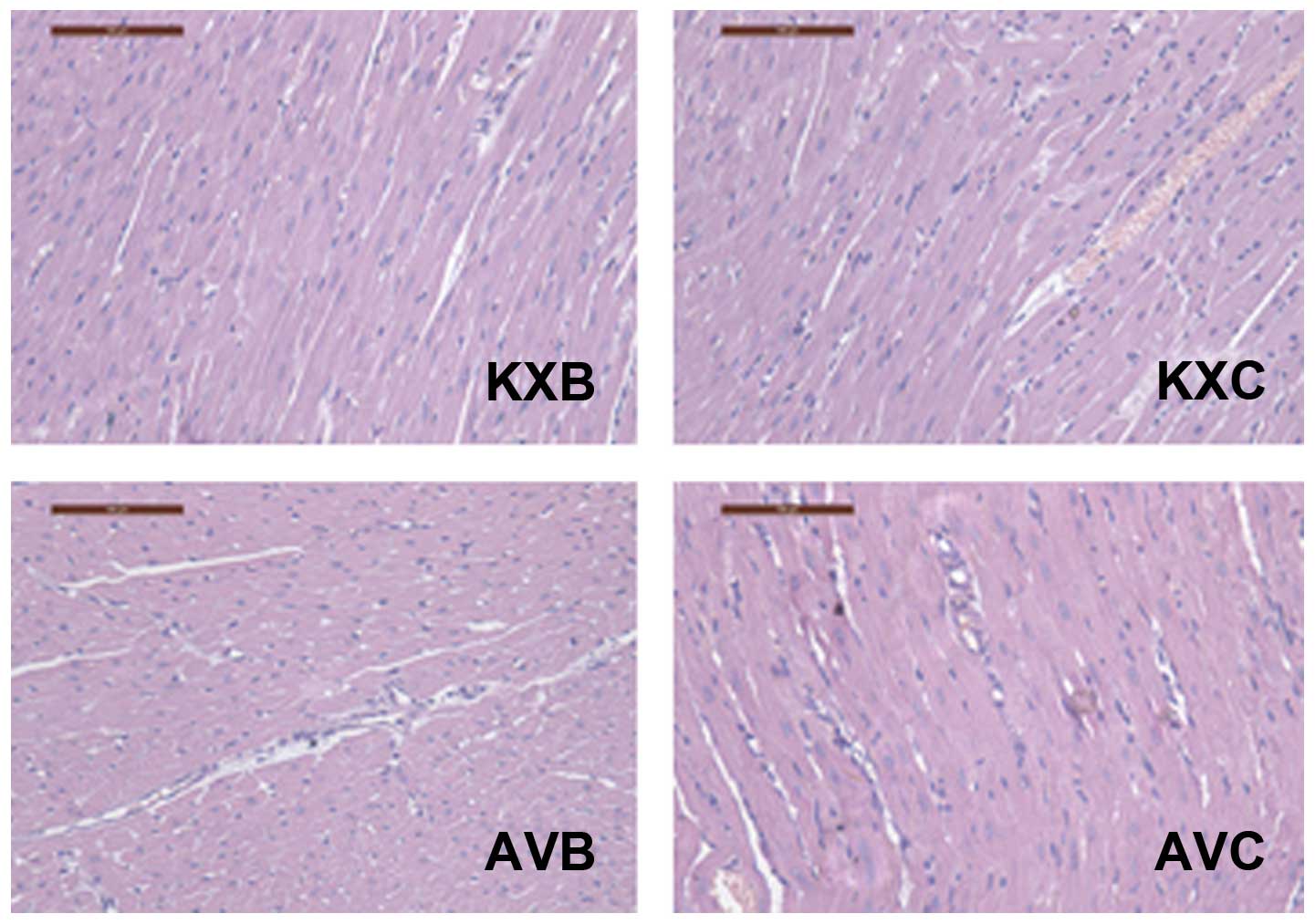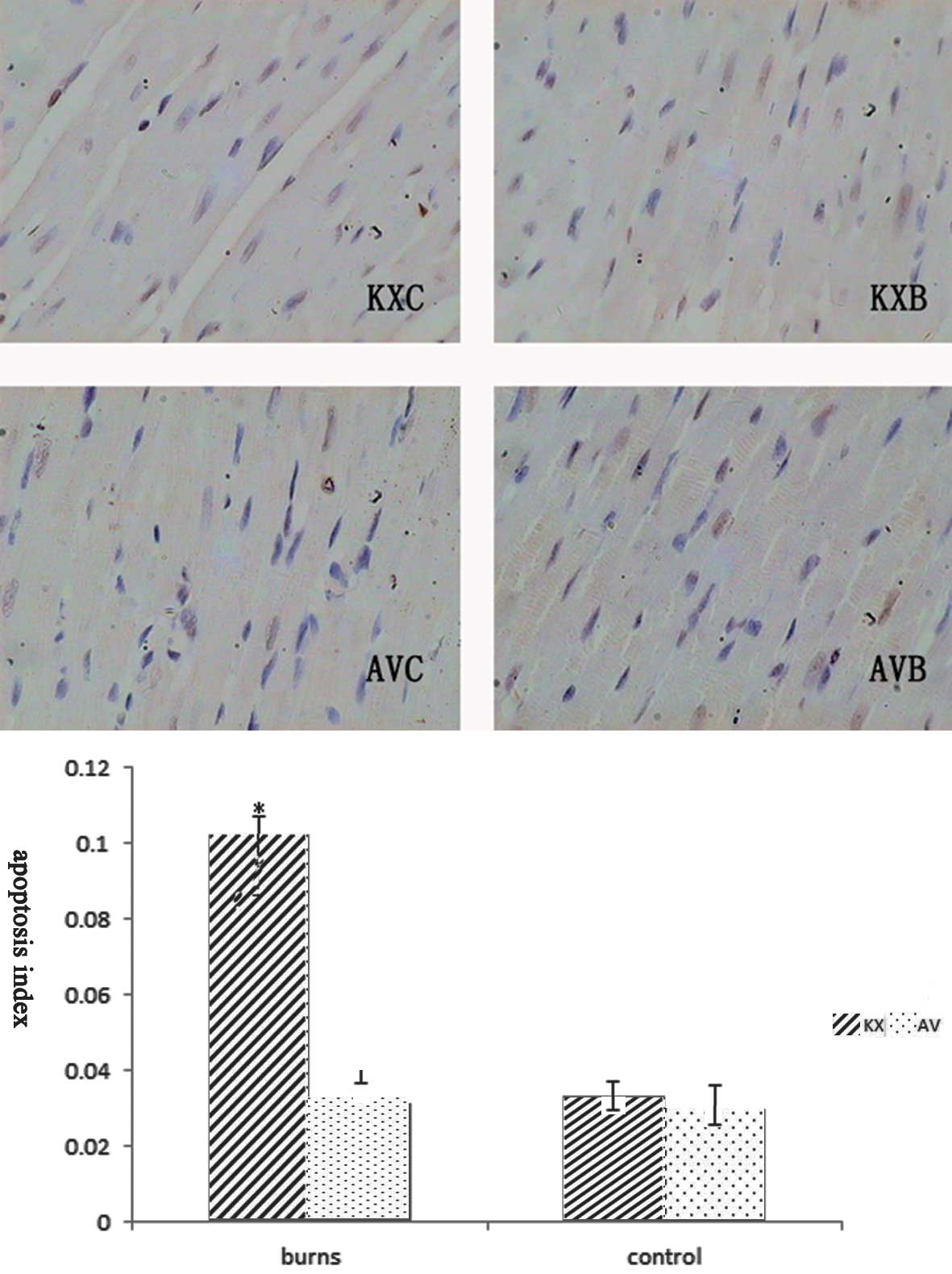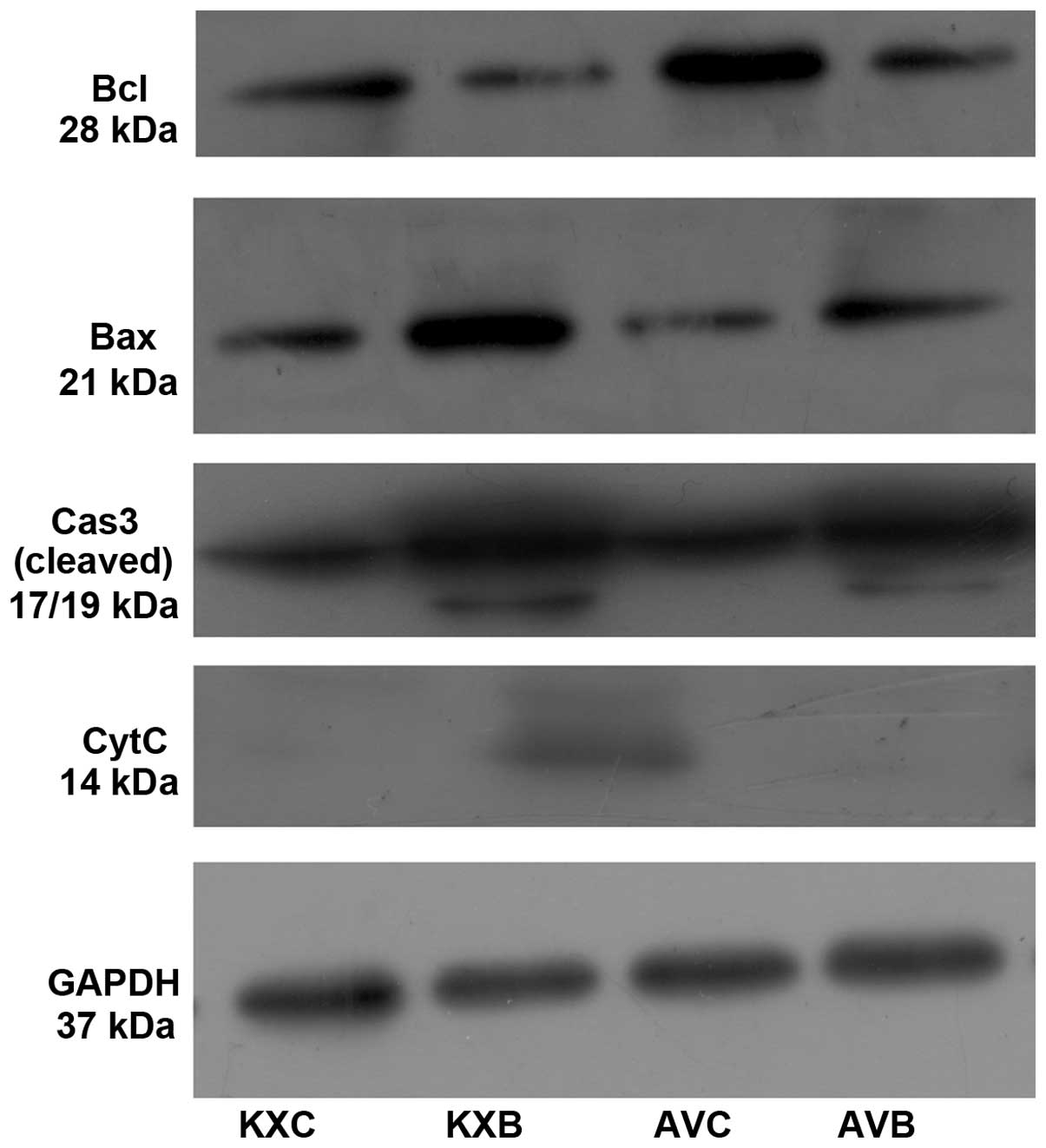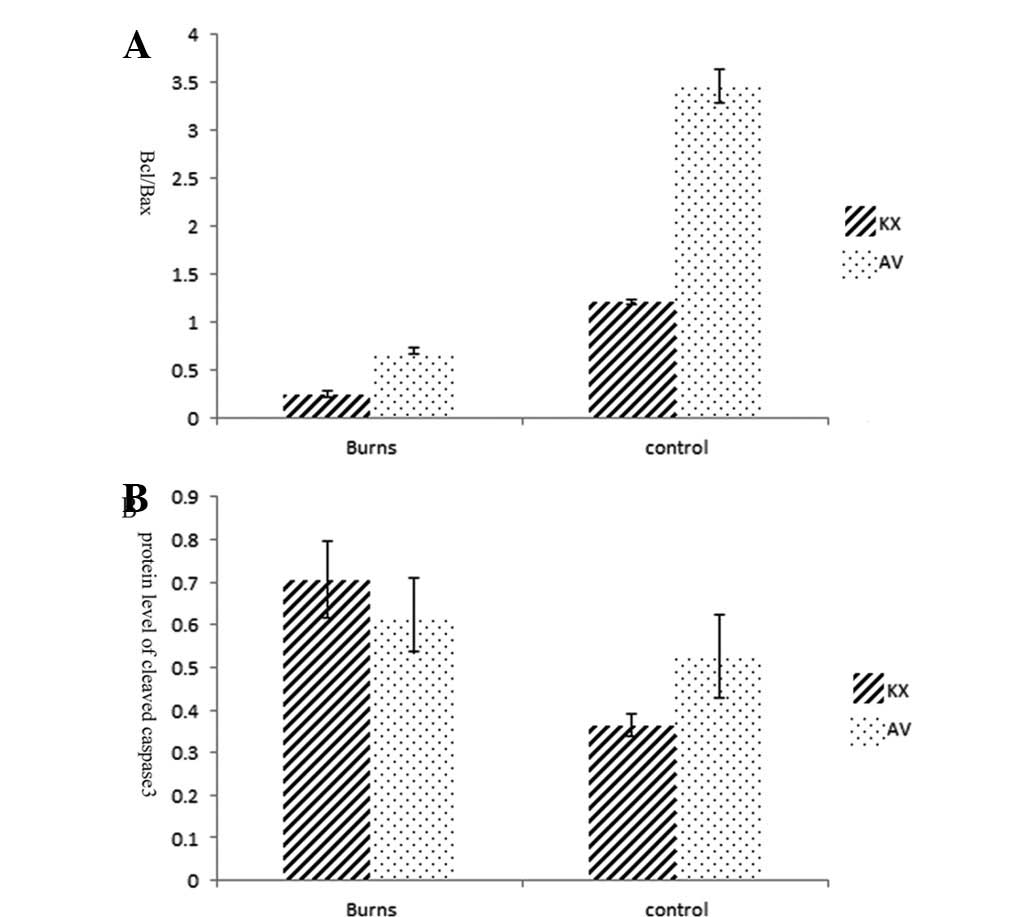|
1
|
Williams FN, Herndon DN, Suman OE, Lee JO,
Norbury WB, Branski LK, Mlcak RP and Jeschke MG: Changes in cardiac
physiology after severe burn injury. J Burn Care Res. 32:269–274.
2011. View Article : Google Scholar : PubMed/NCBI
|
|
2
|
Frithiof R, Mats R, Johan U, Stefan E and
Hans H: Comparison between the effects on hemodynamic responses of
central and peripheral infusions of hypertonic NaCl during
hemorrhage in conscious and isoflurane-anesthetized sheep. Shock.
26:77–86. 2006. View Article : Google Scholar
|
|
3
|
Yang XP, Liu YH, Rhaleb NE, Kurihara N,
Kim HE and Carretero OA: Echocardiographic assessment of cardiac
function in conscious and anesthetized mice. Am J Physiol.
277:H1967–H1974. 1999.PubMed/NCBI
|
|
4
|
Takeishi Y, Ping P, Bolli R, Kirkpatrick
DL, Hoit BD and Walsh RA: Transgenic overexpression of
constitutively active protein kinase C epsilon causes concentric
cardiac hypertrophy. Circ Res. 86:1218–1223. 2000. View Article : Google Scholar : PubMed/NCBI
|
|
5
|
Tanaka N, Dalton N, Mao L, Rockman HA,
Peterson KL, Gottshall KR, Hunter JJ, Chien KR and Ross J Jr:
Transthoracic echocardiography in models of cardiac disease in the
mouse. Circulation. 94:1109–1117. 1996. View Article : Google Scholar : PubMed/NCBI
|
|
6
|
Wagner AE, Mama KR, Steffey EP and Hellyer
PW: Evaluation of infusions of xylazine with ketamine or propofol
to modulate recovery following sevoflurane anesthesia in horses. Am
J Vet Res. 73:346–352. 2012. View Article : Google Scholar : PubMed/NCBI
|
|
7
|
Struck MB, Andrutis KA, Ramirez HE and
Battles AH: Effect of a short-term fast on ketamine-xylazine
anesthesia in rats. J Am Assoc Lab Anim Sci. 50:344–348.
2011.PubMed/NCBI
|
|
8
|
Kober F, Iltis I, Cozzone PJ and Bernard
M: Cine-MRI assessment of cardiac function in mice anesthetized
with ketamine/xylazine and isoflurane. MAGMA. 17:157–161. 2004.
View Article : Google Scholar : PubMed/NCBI
|
|
9
|
Roth DM, Swaney JS, Dalton ND, Gilpin EA
and Ross J Jr: Impact of anesthesia on cardiac function during
echocardiography in mice. Am J Physiol Heart Circ Physiol.
282:H2134–H2140. 2002. View Article : Google Scholar : PubMed/NCBI
|
|
10
|
Kiatchoosakun S, Kirkpatrick D and Hoit
BD: Effects of tribromoethanol anesthesia on echocardiographic
assessment of left ventricular function in mice. Comp Med.
51:26–29. 2001.PubMed/NCBI
|
|
11
|
Hayward R and Lien CY: Echocardiographic
evaluation of cardiac structure and function during exercise
training in the developing Sprague-Dawley rat. J Am Assoc Lab Anim
Sci. 50:454–461. 2011.PubMed/NCBI
|
|
12
|
Martinez PF, Okoshi K, Zornoff LA,
Oliveira SA Jr, Campos DH, Lima AR, Damatto RL, Cezar MD, Bonomo C,
Guizoni DM, Padovani CR, Cicogna AC and Okoshi MP:
Echocardiographic detection of congestive heart failure in
postinfarction rats. J Appl Physiol. 111:543–551. 2011. View Article : Google Scholar : PubMed/NCBI
|
|
13
|
Hoit BD: New approaches to phenotypic
analysis in adult mice. J Mol Cell Cardiol. 33:27–35. 2001.
View Article : Google Scholar : PubMed/NCBI
|
|
14
|
Hart CY, Burnett JC Jr and Redfield MM:
Effects of avertin versus xylazine-ketamine anesthesia on cardiac
function in normal mice. Am J Physiol Heart Circ Physiol.
281:H1938–H1945. 2001.PubMed/NCBI
|
|
15
|
Quenot JP, Le Teuff G, Quantin C, Doise
JM, Abrahamowicz M, Masson D and Blettery B: Myocardial injury in
critically ill patients: relation to increased cardiac troponin I
and hospital mortality. Chest. 128:2758–2764. 2005. View Article : Google Scholar : PubMed/NCBI
|
|
16
|
Lagi A, Meucci E and Cencetti S: Outcome
of patients with elevated cardiac troponin I level after mild
trauma. Am J Emerg Med. 26:248.e3–e5. 2008. View Article : Google Scholar : PubMed/NCBI
|
|
17
|
Lightfoot E Jr, Horton JW, Maass DL, White
DJ, McFarland RD and Lipsky PE: Major burn trauma in rats promotes
cardiac and gastrointestinal apoptosis. Shock. 11:29–34. 1999.
View Article : Google Scholar : PubMed/NCBI
|
|
18
|
Lundberg KC and Szweda LI: Initiation of
mitochondrial-mediated apoptosis during cardiac reperfusion. Arch
Biochem Biophys. 432:50–57. 2004. View Article : Google Scholar : PubMed/NCBI
|
|
19
|
Meyer RE and Fish RE: A review of
tribromoethanol anesthesia for production of genetically engineered
mice and rats. Lab Anim (NY). 34:47–52. 2005. View Article : Google Scholar : PubMed/NCBI
|
|
20
|
Chu WL, Chai JK, Feng YQ, Ma L, Zhu GY,
Zhang HJ and Hu C: Expressions of endoplasmic reticulum stress
associated proteins in livers of severely burned rats. Zhonghua Yi
Xue Za Zhi. 92:853–856. 2012.(In Chinese).
|
|
21
|
Horton JW: Oxygen free radicals contribute
to postburn cardiac cell membrane dysfunction. J Surg Res.
61:97–102. 1996. View Article : Google Scholar : PubMed/NCBI
|
|
22
|
Teichholz LE, Kreulen T, Herman MV and
Gorlin R: Problems in echocardiographic volume determinations:
echocardiographic-angiographic correlations in the presence of
absence of asynergy. Am J Cardiol. 37:7–11. 1976.
|
|
23
|
Boutureira J, Trim CM and Cornell KK:
Acute pulmonary edema after diazepam-ketamine in a dog. Vet Anaesth
Analg. 34:371–376. 2007. View Article : Google Scholar : PubMed/NCBI
|
|
24
|
Stein AB, Tiwari S, Thomas P, Hunt G,
Levent C, Stoddard MF, Tang XL, Bolli R and Dawn B: Effects of
anesthesia on echocardiographic assessment of left ventricular
structure and function in rats. Basic Res Cardiol. 102:28–41. 2007.
View Article : Google Scholar : PubMed/NCBI
|
|
25
|
Blalock A: Experimental Shock. VII The
importance of the local loss of fluid in the production of the low
blood pressure after burns. Arch Surg. 22:610–617. 1931. View Article : Google Scholar
|
|
26
|
Niederbichler AD, Hoesel LM, Ipaktchi K,
Olivarez L, Erdmann M, Vogt PM, Su GL, Arbabi S, Westfall MV, Wang
SC and Hemmila MR: Burn-induced heart failure: lipopolysaccharide
binding protein improves burn and endotoxin-induced cardiac
contractility deficits. J Surg Res. 165:128–135. 2011. View Article : Google Scholar
|
|
27
|
Huang YS, Yang ZC, Yan BG, Yang JM, Chen
FM, Crowther RS and Li A: Pathogenesis of early cardiac myocyte
damage after severe burns. J Trauma. 46:428–432. 1999. View Article : Google Scholar : PubMed/NCBI
|
|
28
|
Alpert JS, Thygesen K, Antman E and
Bassand JP: Myocardial infarction redefined - a consensus document
of The Joint European Society of Cardiology/American College of
Cardiology Committee for the redefinition of myocardial infarction.
J Am Coll Cardiol. 36:959–969. 2000. View Article : Google Scholar
|
|
29
|
Horton J, Maass D, White J and Sanders B:
Effect of aspiration pneumonia-induced sepsis on post-burn cardiac
inflammation and function in mice. Surg Infect (Larchmt).
7:123–135. 2006. View Article : Google Scholar : PubMed/NCBI
|
|
30
|
Reynolds EM, Ryan DP, Sheridan RL and
Doody DP: Left ventricular failure complicating severe pediatric
burn injuries. J Pediatr Surg. 30:264–269. 269–270. 1995.
View Article : Google Scholar : PubMed/NCBI
|
|
31
|
Bergman SA: Ketamine: review of its
pharmacology and its use in pediatric anesthesia. Anesth Prog.
46:10–20. 1999.PubMed/NCBI
|
|
32
|
Christ G, Mundigler G, Merhaut C,
Zehetgruber M, Kratochwill C, Heinz G and Siostrzonek P: Adverse
cardiovascular effects of ketamine infusion in patients with
catecholamine-dependent heart failure. Anaesth Intensive Care.
25:255–259. 1997.PubMed/NCBI
|
|
33
|
Bak Z, Sjöberg F, Eriksson O, Steinvall I
and Janerot-Sjoberg B: Cardiac dysfunction after burns. Burns.
34:603–609. 2008. View Article : Google Scholar : PubMed/NCBI
|
|
34
|
Horwich TB, Patel J, MacLellan WR and
Fonarow GC: Cardiac troponin I is associated with impaired
hemodynamics, progressive left ventricular dysfunction, and
increased mortality rates in advanced heart failure. Circulation.
108:833–838. 2003. View Article : Google Scholar
|
|
35
|
Salomaa V, Ketonen M, Koukkunen H,
Immonen-Räihä P, Lehtonen A, Torppa J, Kuulasmaa K, Kesäniemi YA
and Pyörälä K; FINAMI Study Group. The effect of correcting for
troponins on trends in coronary heart disease events in Finland
during 1993–2002: the FINAMI study. Eur Heart J. 27:2394–2399.
2006.PubMed/NCBI
|
|
36
|
Wu AH: Increased troponin in patients with
sepsis and septic shock: myocardial necrosis or reversible
myocardial depression? Intensive Care Med. 27:959–961. 2001.
View Article : Google Scholar : PubMed/NCBI
|
|
37
|
Franco LG, Fioravanti MC, Damasceno AD,
Borges AC, Soares LK, Rabelo RE and Silva LA: Assessment of serum
enzymatic markers of cardiomyocytes injury in female dogs submitted
to ketamine S(+), atropin and xylazine association. Acta Cir Bras.
24:36–42. 2009.PubMed/NCBI
|
|
38
|
Chen YN, Luo ZR, Zeng LJ, Wu MY, Wu YZ and
Lin ZY: Cardiac troponin I: a marker for post-burn cardiac injury.
Ann Clin Biochem. 37(Pt 4): 447–451. 2000. View Article : Google Scholar : PubMed/NCBI
|
|
39
|
Al-Mousawi AM, Kulp GA, Branski LK, Kraft
R, Mecott GA, Williams FN, Herndon DN and Jeschke MG: Impact of
anesthesia, analgesia, and euthanasia technique on the inflammatory
cytokine profile in a rodent model of severe burn injury. Shock.
34:261–268. 2010. View Article : Google Scholar : PubMed/NCBI
|
|
40
|
Bahrami S, Benisch C, Zifko C, Jafarmadar
M, Schöchl H and Redl H: Xylazine-/diazepam-ketamine and isoflurane
differentially affect hemodynamics and organ injury under
hemorrhagic/traumatic shock and resuscitation in rats. Shock.
35:573–578. 2011. View Article : Google Scholar
|
|
41
|
Sloan RC, Rosenbaum M, O’Rourke D, Oppelt
K, Frasier CR, Waston CA, Allan AG and Brown DA: High doses of
ketamine-xylazine anesthesia reduce cardiac ischemia-reperfusion
injury in guinea pigs. J Am Assoc Lab Anim Sci. 50:349–354.
2011.PubMed/NCBI
|















